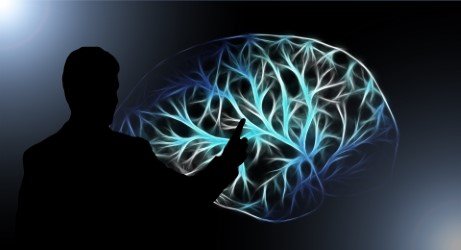How the Brain Works !

Introduction
Our human brain weighs only about 300 gms but consumes twenty percent of body’s energies. Blood flows through the brain to cool it.
Pink portion: Frontal lobe
Green: parietal lobe
Blue: occipital lobe
Functions of the brain
The main four functions of our brain are:
- Voluntary movement: It is something driven by the brain like raising one’s hand at will. These movements are self-generated.
- Perception: These include vision, hearing, smell, sense of position, sense of equilibrium.
- Homeostasis: This is the process where our vital body parameters like temperature, blood pressure, rhythm of our daily life; seasonal rhythms and life rhythms are maintained.
- Abstract Functions: These are functions like thinking, imagining.
Parts of the brain
When looked from the side, the brain seems to consists of the following :
Forebrain, brain stem and this joined to the spinal cord. The brain is covered by our skull.
Forebrain drives our abstract functions.
Cerebral cortex drives our conscious perception.
Homeostasis is achieved by our forebrain, brain stem, and spinal cord.
The right brain is responsible for emotions and left brain for analysis and logic.

Neurons talk to other neurons, muscles and cardiac muscles. They vary in excitability.
Naked neurons can transfer information at a slow rate(0.2 -1.0 metere/second).
A myelinated axon can transfer information at 2-120 meters/sec. In a short time, they transit information very fast like when we have to keep our balance when we stumble.
Glial cells: They support the neurons.
They consist of the following: 1.Astrocytes: They keep the neurons clean, and they are crucial during the development.
2.Myelin( 25%) : 1. Oligodendrocytes(CNS):
2. Schwann cells: (PNS)
iii. Microglia-5%; they are the immune cells; they react when a problem arises in the body.
Cerebral Blood Flow
Oxygen required for the functioning of neurons in our brain. Our brain weighs only 2% our body weight but requires 25% of the total oxygen we breathe in. Neurons will die if oxygen is not made available to them for five minutes.
People feel acute mountain sickness when one goes to a mountain as te availability of oxygen in the air decreases. Inter-cranial pressure if 15 mm Hg and is the difference between the Arterial Pressure (AP) and Cerebral Profusion Pressure
ICP= AP-CPP
If AP goes down or the ICP goes up, then we experience faints, and one falls.
Internal coatings supply blood to the front portion of the brain and vertebral coratids supply blood to the posterior portion of the brain.
Strokes: It occurs when there is a sudden stoppage in blood supply to the brain. In Ischemic strokes, there is no oxygen, and this type accounts for 90% of all strokes.
In hemorrhagic strokes, blood tissues break. The effect of stroke will depend upon at which place of the brain the blood supply is disrupted.
In treating Ischemic strokes, a blood thinner is prescribed.
When diagnosing strokes, it is important to diagnose if it is an ischemic or hemorrhagic stroke. If in hemorrhagic stroke a blood thinner is prescribed then it will aggravate the situation.
Brain tumors: It is a gradual phenomenon, and it destroys the surface of the brain.
Bleeds: If bleeding takes place in the brain. It has serious consequences as the space in the cranium of our brain is limited.
Sometimes bleeding in the brain can lead to death.
Central Nervous system
The following are the four functions of the CNS.
- Voluntary movement: This is driven by the brain like raising one’s hand. These are self-generated.
- Perception: This consists of vision, hearing, smell, sense of position and sense of equilibrium. It depends on the forebrain, and cerebral cortex is required for perception.
- Homeostasis: The vital parameters of our body is kept within limits. Such parameters are body temperature. Blood pressure, the rhythm of our lives, the cycle of life. This is possible with the forebrain, brain stem, and spinal cord.
Abstract function: The forebrain drives this.
Nerves are connected to the Hypothalamus(front portion of the brain), midbrain and the medulla.
Spinal cord gets information from arms, legs, trunk, hearing, smell, and vision. The sensory output is effected in the legs, foot movement, arm and hand movement, swallowing, speech, facial expression, horizontal gaze, vertical gaze and near vision. Hypothalamus controls release from pituitary gland.
Peripheral nervous system
Enteric Nervous System: Neurons sit on the gastrointestinal tract and they number up to 100 million. The contents of the digestive tract are pushed till the anus due to the actions of these neurons, and this takes place automatically.
Hirschsprung's disease: In this disease, a section of the gastrointestinal tract have no neurons. It is detected at birth, and the defect can be surgically removed.
The Enteric Nervous system tells us whether we are hungry, full or gassy. If one is very nervous, it affects our bowel movement.
Meninges: This is situated between the central nervous system and the peripheral nervous system .
Conclusion
How to Keep Your Brain Healthy?
- Keep your blood sugar balanced. Eat every 2-3 hours and include lots of protein and vegetables in your meals. If you eat sweets, combine with some protein, fiber or fat. Don’t skip a meal or eat excessive sweet foods thereby making your blood sugar out of range. Nuts and seeds are great snacks.
- Provide oxygen to your brain. Engage in some form of aerobic exercise every other day for 30—45 minutes. This will increase the flow of blood to the brain.